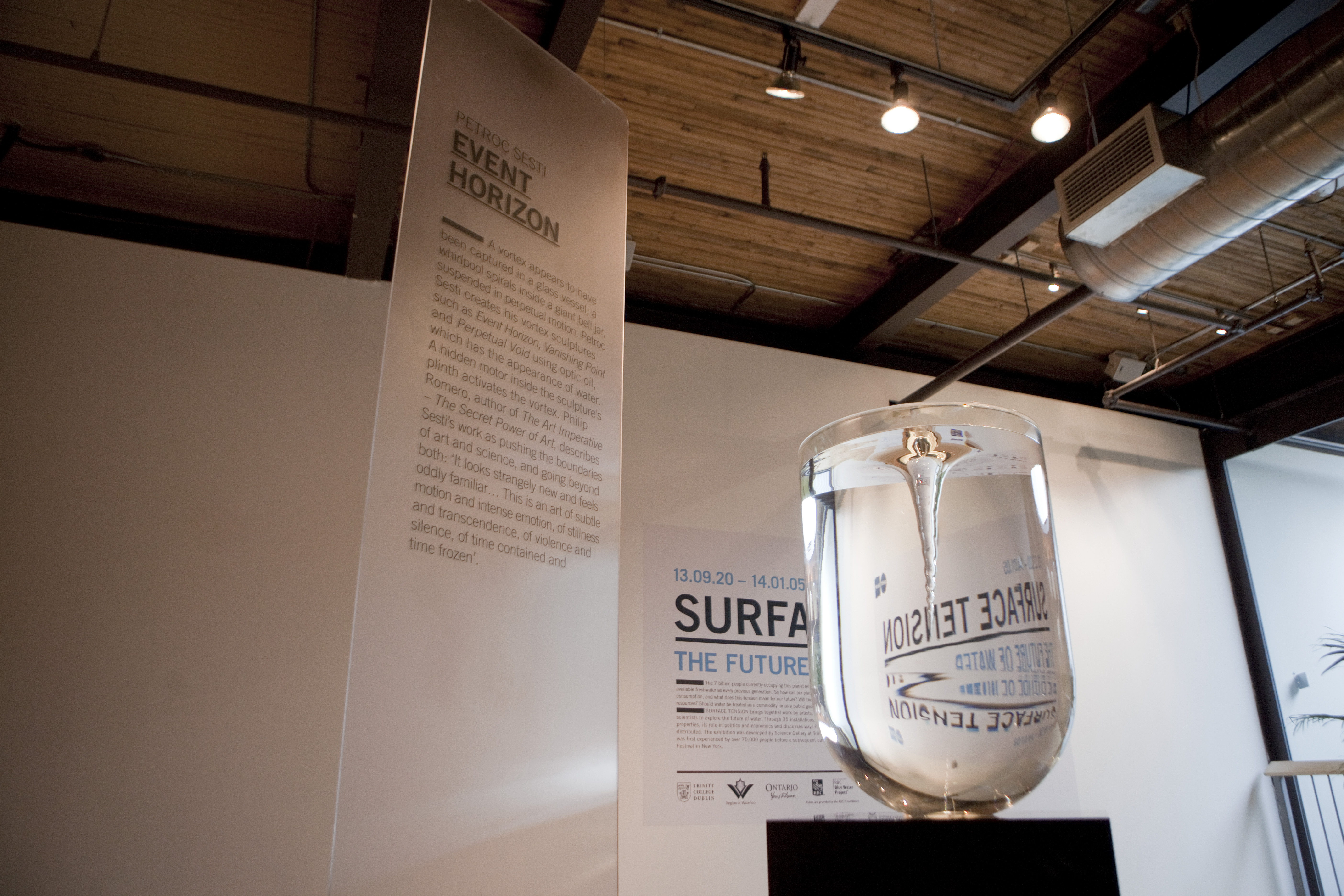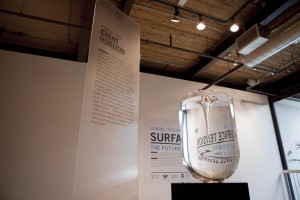H2O makes a splash at THEMUSEUM


As of last weekend, residents of Kitchener-Waterloo were invited to experience a creative exploration of issues surrounding water scarcity, and the “can’t-go-without-it” importance of H20, at the exhibition Surface Tension.
Surface Tension has made its way over from its initial development and debut in Dublin, Ireland, to New York, and finally to a short bus ride away from Wilfrid Laurier University’s (WLU) campus at the THEMUSEUM.
From playing in sprinklers as kids to thinking over life decisions in the shower, water manages to be the most vital, but equally unassuming, part of our lives.
The exhibits blend together science and art with the goal of presenting the Earth’s water supply as vital to life, extremely vulnerable and too important to take for granted.
THEMUSEUM’s CEO, David Marskell, is optimistic that visitors will leave with a new perspective on water. “I’m really hoping that people will be provoked to [share] a dialogue … about water,” said Marskell in an interview with the Cord, and “will … hopefully change their daily lives in some way.”
One such piece, a sculpture by British artist Hal Watts, challenges visitors to operate a hand pump to create the amount of energy it takes to produce a one-litre bottle of water.
The task would normally take the average person three hours if they dared to try it.
The exhibition also looks at water through the lenses of different cultures. A collection of photographs by Professor Ronan Foley documents Holy wells across Ireland where water has served as a source of healing and wellness for centuries.
Another set of pictures features a water conservation campaign that was spread across India, a country that grapples with shortages on a daily basis, by artists Anna MacLeod and Carol Hummel in 2010.
Even though the exhibition brings together influences from across the globe, Surface Tension adopts a distinct local feel for its Canadian debut.
People from across Southern Ontario were invited to drop off tap water from their homes and businesses to be a part of “Source Dublin: Field of Water,” an interactive art piece by Mary Coble.
The samples are currently on display and will be filtered for visitors to drink later this fall as part of a presentation that encourages the community to be curious about the quality of their local water.
Brave guests are also offered a taste from the murky waters of Kitchener’s Victoria Park Lake— after a thorough filtration process.
While much of the exhibition calls attention to the alarming issues of water scarcity and pollution, the exhibition dedicates an equal amount of space to pieces that connect water to a sense of beauty and wonder.
An installation by American sculptor David Bowen transfers signals from a buoy floating in the Pacific Ocean, with its location currently unknown, to a mechanical grid displayed at THEMUSEUM that mimics the movement of the surrounding waves in real time.
The result is an eye catching and memorable piece that alludes to the mystery of an ocean that covers more than 30% of the Earth’s surface.
WLU is also collaborating with THEMUSEUM throughout the exhibition’s run to present a series of talks and film screenings dubbed “Water Dialogues.”
“WLU is involved in a big way”, remarked Marskell on the up-coming roster of events.”
“It’s a stellar list that talks about local issues of water quality and so on, right up to issues in the arctic. It’s really, really rich. [WLU] gave us the resources to allow us to broaden the dialogue.”
Surface Tension fits right in with THEMUSEUM’s commitment to engaging people at the cross roads of science, art and culture.
“We’re not your normal museum,” said Marskell, “and I think we’ll blow [people’s] minds with this exhibition.”
Surface Tension runs until the 5th of January 2014, and discounted student tickets are available for purchase. A full schedule of Water Dialogue events, presented by WLU, along with more information on the exhibition, is available on www.themuseum.ca.

